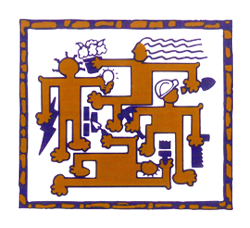After choosing the level of service you need from your builder, the next step is deciding how much involvement you want to have in the construction process. Here are some options:
OPTION 1 – OWNER/BUILDER
You are responsible for every aspect of the construction process; from plans, permitting, financing, and getting bids. The construction management and liability including workman’s compensation are your responsibility. The buck stops with you so to speak. It’s very tough mentally and physically if you have no prior experience. There are lots of surprises along the way. It’s important to keep in mind that at the time of county permit issuance you must declare “contractor” or “owner/builder.” NOTE: You may not sell your home for two years after completion with an “owner/builder” designation.
Option 1 can be very rewarding if you make it through to completion in one piece. We are also happy to assist you with this process. Please see the Greg Putman Construction/Owner Builder Program – Option 4 section below.
OPTION 2 – ARCHITECT
In this option your architect will be responsible for everything including oversight and construction. The architect you use must be licensed in Hawaii. They will document the progress and report back to you. You are responsible for funding the project and set your own involvement with the architect. This can be great if you are off-island and have little time to spare. This option is costly, often priced as a percentage of building costs, but can take a load off you mind.

OPTION 3 – GENERAL BUILDING CONTRACTOR
One person or company is responsible for pricing and building the project based on a set of plans provided by your designer. The greater the detail and specifications provided the more accurate the pricing. Otherwise, the use of allowances for unknowns such as fixtures varies widely. Typically, a few contractors bid on the project, and you work out, possibly with your architect, which contractor seems the best fit for you. The general contractor will have their regular sub-contractors they like to work with. They may or may not have their own work crews, a superintendent, or personally participate in the actual labor. You pay the general contractor; they pay all the bills including overhead. Liability shifts away from you to the general contractor. You should receive general releases from all material suppliers, workers, and contractors along the way, ensuring no liens are filed against the property. You don’t want to pay twice. Contractors must also be licensed in Hawaii.

OPTION 4 – GREG PUTMAN CONSTRUCTION/OWNER BUILDER PROGRAM
You will work with us as a team and can choose your degree of involvement and responsibility while participating in the truly rewarding experience of building your own home! Determine your strengths and weaknesses, where do you need help? By teaming up with an experienced, hands-on builder and guide, we will form a casual partnership to negotiate our way through the trying building process and make it a win-win for all. Examples include but are not limited to: you controlling all the payments, helping choose sub-contractors, laboring side by side learning new skills. Liability becomes shared with the contractor using his insurances. Advantages also include a licensed contractor on record for bonding or the lender if you are borrowing money. Typically, a budget and timeline are produced. A fixed fee is agreed upon depending on the estimated job duration. There are no hidden costs and fewer surprises. Changes are easily made. You have someone to bounce ideas off. Cost savings along the way are yours. We have used this method often in Hawaii, and it works well.
Variations on the above happen regularly. Fixtures and appliances are often chosen by the owner to be, as well as colors and finishes. Use the Architect and Contractor as guides.
Also, be sure to read Steps 1, 2, 3 about the process so you can be as prepared as possible for your build experience.


